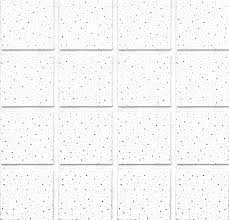8 月 . 13, 2024 09:18 Back to list
Fire-Resistant Access Panels Designed for Drywall Ceilings in Commercial and Residential Applications
Fire Rated Access Panels for Drywall Ceilings Ensuring Safety and Compliance
In the realm of construction and building design, safety is paramount. One of the critical aspects of ensuring safety in both commercial and residential buildings is the installation of fire-rated access panels in drywall ceilings. These specialized panels not only provide access to mechanical systems and utilities hidden within ceilings but also play a significant role in maintaining the fire-resistance integrity of the structure.
What are Fire-Rated Access Panels?
Fire-rated access panels are unique construction features designed to provide convenient access to concealed areas, such as plumbing, electrical, and HVAC systems, while also offering fire-resistance capabilities. Constructed from materials that can withstand high temperatures, these panels are tested and rated according to specific fire-resistance standards, usually segmented by time—such as 1-hour or 2-hour ratings—indicating the duration for which they can contain heat and flames during a fire incident.
Importance of Fire-Rated Panels
The necessity for fire-rated access panels is underscored by building codes and regulations that mandate specific fire safety measures. These panels act as barriers, helping to prevent the spread of smoke and flames from one area to another. In multifamily residences, commercial buildings, or healthcare facilities, the implications of a fire can be devastating, making compliance with fire safety regulations crucial.
Moreover, they provide easy access for maintenance and inspections without compromising fire safety
. This dual functionality ensures that building management can conduct routine checks and repairs while minimizing interruptions to the building’s fire resistance.Installation and Design Considerations
fire rated access panels for drywall ceilings

When planning the installation of fire-rated access panels in drywall ceilings, several factors must be considered. Firstly, the panel must be installed in accordance with the manufacturer’s guidelines and local building codes to ensure that it effectively contributes to the building’s fire-resistance rating. The location of the panel is also critical; it should be positioned strategically to allow easy access to the systems it serves while ensuring that it does not create fire hazards.
Another vital aspect is the selection of the correct fire rating. This rating should match or exceed the surrounding building materials to maintain the overall fire-resistance level. For example, if a ceiling has a 1-hour fire-resistance rating, the access panel used must also possess at least a 1-hour rating.
Benefits of Using Fire-Rated Access Panels
1. Safety Enhancement The primary benefit is robust fire safety, protecting lives and property by limiting the spread of fire and smoke. 2. Regulatory Compliance Utilizing these panels ensures compliance with fire safety codes, reducing the risk of penalties and ensuring the building passes inspections.
3. Operational Efficiency Fire-rated access panels enable quicker maintenance access without requiring intrusive modifications to ceilings, reducing downtime.
4. Aesthetic Integration Modern fire-rated access panels are designed to blend seamlessly with drywall finishes, preserving the overall aesthetic appeal of the structure.
Conclusion
Fire-rated access panels for drywall ceilings are essential components in modern construction practices, combining functionality with safety. By providing necessary access to critical systems while maintaining the fire-resistance integrity of the building, these panels are invaluable in ensuring a safe environment for occupants. As building codes evolve and safety standards become more stringent, the importance of incorporating fire-rated access panels into design and construction practices will only continue to grow. For builders, architects, and facility managers, understanding and implementing these safety measures is a fundamental responsibility that ultimately protects lives and property.
-
Revolutionizing Interior Design with Ceilings t grid Suspended SystemNewsOct.29,2024
-
Revolutionizing Ceiling Design with ceiling access panel with Gypsum Tile WaterproofNewsOct.29,2024
-
Revolutionizing Interior Design with PVC Gypsum Ceiling: A Comprehensive GuideNewsOct.29,2024
-
Elevating Interior Design with High quality Mineral Fiber Ceiling TilesNewsOct.29,2024
-
Revolutionizing Interior Design with PVC Gypsum Ceiling: A Comprehensive GuideNewsOct.29,2024
-
Elevating Interior Design with High-Quality Mineral Fiber Ceiling Tiles: A Comprehensive GuideNewsOct.29,2024







